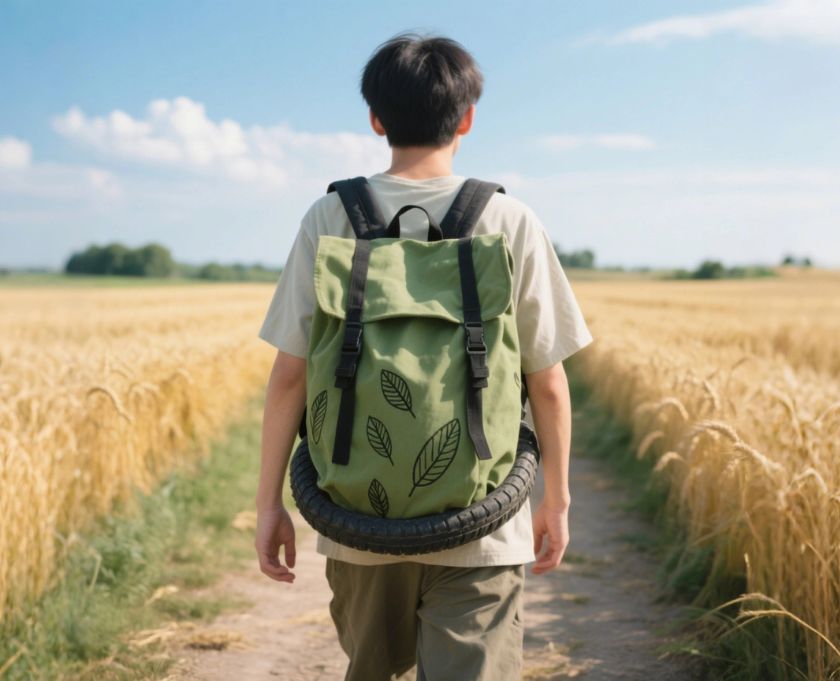Beautiful Plants For Your Interior

Backpacks Are Daily Essentials—Let’s Make Them Sustainable
In 2025, backpacks are more than just bags. They’re part of our everyday life—carrying laptops, groceries, hiking gear, or travel essentials. But what about what your backpack is made of?
Choosing an eco-conscious backpack isn’t just trendy. It’s a smart, ethical, and often more durable choice for anyone who cares about the planet, human rights, and long-term use.
1. What Makes a Backpack Eco-Conscious?
A truly eco-friendly backpack combines:
- Recycled materials like PET bottles, fishing nets, or organic cotton
- Non-toxic dyes and water-saving production
- Ethical labor practices
- Durability that reduces waste over time
Look for certifications like GOTS, Bluesign, or Fair Trade when shopping.
2. Why It’s Time to Rethink How We Buy Backpacks
Environmental Impact:
- Traditional bags are often made of virgin polyester or PVC—heavy on fossil fuels.
- Most cheap bags are designed to break in 1–2 years, ending up in landfills.
Health & Ethics:
- Some bags contain harmful chemicals like formaldehyde.
- Many are made under unethical labor conditions.
Choosing a sustainable bag = supporting fair wages and cleaner production.
3. Top Eco-Conscious Backpack Brands in 2025
1. Patagonia
- Famous for recycled materials and repair programs.
- Great for hiking, everyday carry, and minimalist styles.
2. Terra Thread
- Made from organic cotton, GOTS certified.
- Budget-friendly and ethically produced.
3. Fjällräven Re-Kånken
- Classic design made with 100% recycled polyester.
- Produced with SpinDye® technology, reducing water and energy use.
4. Bellroy
- B Corp certified, using recycled bottles and leather alternatives.
- Sleek, professional options for work and travel.
5. GOT BAG
- Made from recycled ocean plastic, especially ideal for travel lovers.
- Water-resistant, durable, and climate-neutral certified.
4. Can Sustainable Backpacks Be Stylish? Absolutely.
Eco-friendly doesn’t mean bland or boring.
Look for:
- Earth tones like sand, olive, navy—timeless and versatile
- Slim profiles with padded laptop sleeves
- Convertible styles for work, travel, and gym
In fact, many eco brands now outshine fast fashion in both design and function.
5. How to Care for Your Sustainable Backpack
Cleaning Tips:
- Hand wash with mild soap and cold water
- Air dry naturally—avoid dryers
- Spot clean stains with a cloth and vinegar mix
Storage Tips:
- Empty it completely when not in use
- Store in a cool, dry place
- Avoid overloading or hanging it by one strap
6. Common Myths About Eco-Friendly Bags (Busted!)
Myth 1: They’re too expensive
Fact: Long-lasting quality often costs less over time.
Myth 2: They’re not durable
Fact: Recycled materials are often as strong—if not stronger.
Myth 3: Limited options
Fact: From hiking packs to tech bags, there are endless sustainable designs now.
7. Practical Reasons to Make the Switch
| Benefit | Why It Matters |
|---|---|
| Reduces plastic waste | Helps fight ocean pollution |
| Lasts longer | Fewer replacements = less waste & more savings |
| Socially responsible | Supports ethical brands & fair labor practices |
| Unique style | Stand out with minimalist or earthy aesthetics |
FAQs: Why Your Next Backpack Should Be Eco-Conscious
1. Are eco-conscious backpacks waterproof?
Many are—especially those made with recycled ocean plastic or PET.
2. Do they last as long as traditional backpacks?
Yes, and some brands even offer repair or trade-in programs.
3. What’s the best eco backpack for travel?
Try GOT BAG or Patagonia—both are built for tough conditions and ethical production.
4. Are they more expensive?
Initial prices may be higher, but you save more by not needing replacements.
5. How do I know if a backpack is really eco-friendly?
Check for material transparency, third-party certifications, and brand ethics.
Conclusion: Your Backpack Should Reflect Your Values
Your backpack goes everywhere with you—so why not make sure it aligns with what you care about? Choosing an eco-conscious backpack in 2025 means supporting better materials, responsible brands, and smarter consumer habits. Style, function, and sustainability are no longer separate priorities. With the right bag, you can have them all.